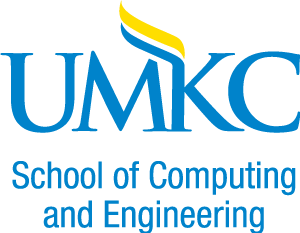Industry Program at a Glance
Industry Panels
IP01: Challenges of RF Propagation and Channel Modeling in the 5G Era
IP02: Promise Meets Reality: mmWave and Massive MIMO in Future Wireless Systems
IP03: 5G Millimeter-wave Channel Measurements and Models
IP04: 5G – Recent Advance and Future Evolution
Executive/CTO Forum
IF01: Executive/CTO Forum 1
IF02: Executive/CTO Forum 2
Distinguished Industry Speakers Forum
Distinguished Industry Speakers
IPR01: Cybersecurity Detections and Data Analytics
IPR01A: Cybersecurity Detections Platform
IPR01B: Data Analytics
IPR02: 5G NR
IPR02A: 5G NR Radio Interface for Sub 6GHZ and mmWave Bands
IPR02B: 5G NR Key Benefit Concepts with Focus on the Support of Multi-Antenna/MIMO Techniques
IPR03: Network Design and Simulation
IPR03A: Options for Reliable Wireless Communications in Aerospace
IPR03B: Accelerate Network R & D Using NetSim
Industry Seminars
IS01: Radio Communications in a Hostile Environment
IS02: 5G Development with MATLAB
Industry Podium Presentation
IPP01: Ideal Hardware and Software for MAC/PHY Layer Prototyping
Industry Panels
IP01: Challenges of RF Propagation and Channel Modeling in the 5G Era
Panelists:
- Chair: Houman Zarrinkoub, PhD., MathWorks
- Mohsen Hosseinian, PhD. InterDigital Inc.
- Amitabha (Amitava) Ghosh, Ph.D. Nokia
- Kafi Hassan, Ph.D., Sprint
- Mike McLernon, MathWorks
The panel discusses new challenges and advances in development of RF propagation and channel modeling for 5G and future wireless communications systems. In this modern era, wireless applications will go well beyond traditional cellular communications and will include applications such as IoT, machine-type communications, remote medicine, augmented reality, autonomous driving and V2X. These applications take place in new RF propagation environments and require characterizations by new channel models. Disruptive technologies such as Massive MIMO and mmWave further complicate the picture. They introduce novel requirements including support for larger frequency bands and handling directional and beamforming antenna arrays and spatially-concentrated beam patterns. Since accurate channel characterizations are crucial in realistic system performance evaluations, wireless research community, equipment manufacturers and service providers are looking to perform large scale field measurements to develop and validate new channel models. As a result, new algorithms and techniques based on ray tracing, quasi-deterministic or map-based propagation models are being proposed and new visualization and characterization tools are being developed.
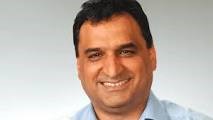
Dr. Mohsen Hosseinian received his Ph.D. in electrical engineering from The University of Calgary, Canada, in 1999. Dr. Hosseinian has over 20 years of industry experience in wireless system design. He joined InterDigital Inc. in 2005, where he currently manages simulation and modeling activities for PHY and MAC layers of 3GPP LTE Advanced (4G) and NR (5G). He previously worked at TRLabs, WiLAN, and Harris communications, where he designed and developed WCDMA, OFDM, and high-speed radio systems. His current research interests include mmW channel modeling, Ultra Reliable Low Latency Communication (URLLC), NR in unlicensed spectrum (NR-U), and Non-Terrestrial Networks (NTN).
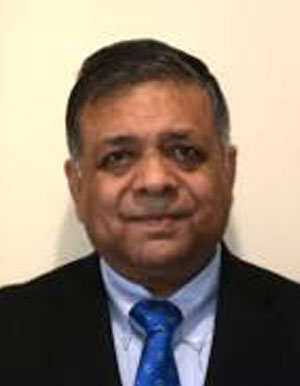 Amitabha (Amitava) Ghosh (amitava.ghosh@nokia.com) is a Nokia Fellow and Head, Radio Interface Group at Nokia Bell Labs. He joined Motorola in 1990 after receiving his Ph.D in Electrical Engineering from Southern Methodist University, Dallas. Since joining Motorola he worked on multiple wireless technologies starting from IS-95, cdma-2000, 1xEV-DV/1XTREME, 1xEV-DO, UMTS, HSPA, 802.16e/WiMAX and 3GPP LTE. He has 60 issued patents, has written multiple book chapters and has authored numerous external and internal technical papers. He is currently working on 3GPP LTE-Advanced and 5G technologies. His research interests are in the area of digital communications, signal processing and wireless communications. He is the recipient of 2016 IEEE Stephen O. Rice and 2017 Neal Shephard prize, member of IEEE Access editorial board and co-author of the book titled “Essentials of LTE and LTE-A”.
Amitabha (Amitava) Ghosh (amitava.ghosh@nokia.com) is a Nokia Fellow and Head, Radio Interface Group at Nokia Bell Labs. He joined Motorola in 1990 after receiving his Ph.D in Electrical Engineering from Southern Methodist University, Dallas. Since joining Motorola he worked on multiple wireless technologies starting from IS-95, cdma-2000, 1xEV-DV/1XTREME, 1xEV-DO, UMTS, HSPA, 802.16e/WiMAX and 3GPP LTE. He has 60 issued patents, has written multiple book chapters and has authored numerous external and internal technical papers. He is currently working on 3GPP LTE-Advanced and 5G technologies. His research interests are in the area of digital communications, signal processing and wireless communications. He is the recipient of 2016 IEEE Stephen O. Rice and 2017 Neal Shephard prize, member of IEEE Access editorial board and co-author of the book titled “Essentials of LTE and LTE-A”.
IP02: Promise Meets Reality: mmWave and Massive MIMO in Future Wireless Systems
Panelists:
-
Chair: Bingyu Qu, Senior Expert, Huawei Technologies Co. Ltd.
-
Robert W. Heath Jr., Cullen Trust for Higher Education Endowed Professor in the Department of ECE at The University of Texas at Austin, and Director of UT SAVES.
-
Ian Wong, Senior Manager of the Advanced Wireless Research group, National Instruments
-
Amitabha (Amitava) Ghosh, Nokia Fellow and Head, Radio Interface Group at Nokia Bell Labs
-
Lei Chen, Principle Engineer, Huawei Technologies Co. Ltd.
5G is accelerating a better connected world with high data rate, low latency, high reliability and massive connections. Massive MIMO (M-MIMO) in the mmW range is considered to be one of the key technologies that will enable 5G capacity increases. How much of the hype surrounding M-MIMO is wishful thinking and how much is reality is a critical question for the future of 5G. Many challenges remain in performance evaluation and implementation. In this panel we examine the critical issues surrounding M-MIMO for mmW, how to address those challenges and in what areas further research is needed. This exciting panel hopes to bring the audience a little closer to understanding this critical technology.
Bingyu Qu graduated from Mathematic Department of Peking University, China. He joined Huawei Technologies Co. Ltd in 1998. He led the WCDMA UE baseband algorithm development in Huawei from 1998 to 2004. Since 2004, he worked as research leader of LTE and NR physical layer standardization and chief expert of millimeter wave communications. He has more than 100 granted patents. His current research interest includes millimeter wave, massive MIMO and new waveform/sequences.
Ian C. Wong is Senior Manager of the Advanced Wireless Research group at National Instruments where he leads the company’s 3GPP and 802.11 wireless standards strategy and platforms for wireless system design, simulation, prototyping, and implementation. From 2007-2009, he was a systems research and standards engineer with Freescale Semiconductor where he represented Freescale in the 3GPP LTE standardization efforts. He was the Industry Program Chair for IEEE Globecom 2015 in Austin, the current Director of Industry Communities for IEEE Communications Society, and a senior member of the IEEE. His current research interests include 5G wireless systems design and prototyping, and design automation tools for rapid algorithm development. Dr. Wong is the co-author of the Springer book “Resource Allocation for Multiuser Multicarrier Wireless Systems,” has over 10 patents, over 25 peer-reviewed journal and conference papers, and over 40 standards contributions. He was awarded the Texas Telecommunications Engineering Consortium Fellowship in 2003-2004, and the Wireless Networking and Communications Group student leadership award in 2007. He received the MS and PhD degrees in electrical engineering from the University of Texas at Austin in 2004 and 2007, respectively, and a BS degree in electronics and communications engineering (magna cum laude) from the University of the Philippines in 2000.
Amitabha (Amitava) Ghosh (amitava.ghosh@nokia.com) is a Nokia Fellow and Head, Radio Interface Group at Nokia Bell Labs. He joined Motorola in 1990 after receiving his Ph.D in Electrical Engineering from Southern Methodist University, Dallas. Since joining Motorola he worked on multiple wireless technologies starting from IS-95, cdma-2000, 1xEV-DV/1XTREME, 1xEV-DO, UMTS, HSPA, 802.16e/WiMAX and 3GPP LTE. He has 60 issued patents, has written multiple book chapters and has authored numerous external and internal technical papers. He is currently working on 3GPP LTE-Advanced and 5G technologies. His research interests are in the area of digital communications, signal processing and wireless communications. He is the recipient of 2016 IEEE Stephen O. Rice and 2017 Neal Shephard prize, member of IEEE Access editorial board and co-author of the book titled “Essentials of LTE and LTE-A”.
Lei Chen (ray.chenlei@huawei.com) Lei Chen is a principal engineer of Huawei on wireless network research. He joint Huawei at 2008 and worked on physical layer research and 3GPP RAN1 standardization. He lead the non-linear MIMO research and 5G new waveform research internally in Huawei since 2011. His current research interests include waveform, mmWave transmission and the integrated access and backhaul.
IP03: 5G Millimeter-wave Channel Measurements and Models
Panelists:
- Charlie Zhang, VP, Standards and Mobility Innovation Lab, Samsung Research America, USA
- Andy Molish, Professor, University of Southern California, USA
- Bingyu Qu, Huawei
- David Michelson, University of British Columbia
- Nuria Gonzalez Prelcic, University of Texas
While higher frequencies represent the next frontier in wireless spectrum, their utilization for various applications and usage scenarios has been somewhat limited to date due to the high propagation loss observed and the many unknowns related to signal propagation properties. New radio and antenna designs are emerging to take advantage of higher frequency propagation properties provided these are well understood, characterized, and documented into usable channel models. Industry and the research community have been developing channel propagation models for the millimeter wave band for a decade now and there are several efforts worldwide including the 5G mmWave Channel Model Alliance, NYU-Wireless, METIS2020, COST1004, ETSI mmWave SIG among others. This panel addresses the progress made to date on this important front and the challenges that remain to be addressed to fully take advantage of the higher frequency bands.
Nada Golmie (nada@nist.gov) received her Ph.D. in computer science from the University of Maryland at College Park. Since 1993, she has been a research engineer at the National Institute of Standards and Technology. She is currently the chief of the wireless networks division in the Communications Technology Laboratory. Her research in media access control and protocols for wireless networks led to over 100 technical papers presented at professional conferences, journals, and contributed to international standard organizations and industry led consortia. She is the author of “Coexistence in Wireless Networks: Challenges and System-level Solutions in the Unlicensed Bands," published by Cambridge University Press (2006). She leads several projects related to the modeling and evaluation of future generation wireless systems and protocols and serves as a co-chair for the 5G mmWave Channel Model Alliance.
Charlie Jianzhong Zhang is a Vice President and Head of the Standards and Mobility Innovation Lab with Samsung Research America, where he leads research and standards for 5G cellular systems and next generation multimedia networks. He received his Ph.D. degree from University of Wisconsin, Madison. From August 2009 to August 2013, he served as the Vice Chairman of the 3GPP RAN1 working group and led development of LTE and LTE-Advanced technologies such as 3D channel modeling, UL-MIMO and CoMP, and Carrier Aggregation for TD-LTE. Before joining Samsung, he was with Motorola from 2006 to 2007, working on 3GPP HSPA standards, and with the Nokia Research Center from 2001 to 2006 working on the IEEE 802.16e (WiMAX) standard and EDGE/CDMA receiver algorithms. Charlie is a Fellow of IEEE.
IP04: 5G – Recent Advance and Future Evolution
Panelists:
- Miguel Dajer, Huawei
- Nada Gomie, NIST
- Jin Yang, Verizon
- Fred Vook, Nokia
- Geng Wu, Intel
In March 2017, 3GPP finalized the feasibility study on New Radio (NR) for 5G and started the normative work for developing 5G NR specifications by June 2018 for inclusion in Rel-15. 3GPP also agreed to an intermediate milestone to complete the specifications for non-standalone 5G NR, where a mobile device should connect to both LTE and 5G NR, by December 2017 to meet the industry interest for early deployments in 2019 in several regions in the world. Following completion of 5G NR specifications in Rel-15, 3GPP will specify additional features for 5G NR in Rel-16 that would be released in December 2019.
Currently many people are wondering what is going to happen with 5G, and whether or not 5G can really generate the amount of interest/business impact that it was hyped to do. At the time of ICC 2018, the mobile industry should have learned lessons from trials and initial commercialization effort of 5G. For example, there will be 5G trials during PyeongChang Winter Olympics in Korea in February 2018. In addition, there will be significant amount of effort for commercial deployments of 5G networks in the US during year 2018.
This proposed panel will be a very timely opportunity to discuss about lessons learned from trials and initial commercialization efforts, ongoing challenges, business impacts, and features to be included in future releases of 5G NR standards to address identified issues and to improve the ecosystem. In this proposed panel, we will bring together leading experts from major operators, infrastructure, terminal and chipset vendors as well as other key members of wireless communications industry ecosystem. These experts will provide views and insights to pave the way realizing the vision of 5G and business impact that 5G has been expected to do.
Dr. Juho Lee is currently a Master (technical VP) with Samsung Electronics, where he is leading research on standardization of wireless communications and Samsung's standardization activity in 3GPP. He received his B.S., M.S., and Ph.D. degrees in electrical engineering from Korea Advanced Institute of Science and Technology (KAIST), Korea, in 1993, 1995, and 2000, respectively. He joined Samsung Electronics in 2000 and has been working on standardization of mobile communications for 3G and 4G such as WCDMA, HSDPA, HUSPA, LTE, and LTE-Advanced, LTE-Advanced Pro, and is also actively working on research and standardization for 5G. He was a vice chairman of TSG RAN WG1 from February 2003 to August 2009, chaired LTE/LTE-Advanced MIMO sessions, and served as the rapporteur for the 3GPP LTE-Advanced Rel-11 CoMP work item.
Dr. Charlie (Jianzhong) Zhang is a VP and head of Standards and Mobility Innovation Lab with Samsung Research America, where he leads research, prototyping and standards for 5G cellular systems and future multimedia networks. He received his Ph.D. degree from University of Wisconsin, Madison. From August 2009 to August 2013, he served as the Vice Chairman of the 3GPP RAN1 working group and led development of LTE and LTE-Advanced technologies such as 3D channel modeling, UL-MIMO and CoMP, Carrier Aggregation for TD-LTE, etc. Before joining Samsung, he was with Motorola from 2006 to 2007 working on 3GPP HSPA standards, and with Nokia Research Center from 2001 to 2006 working on IEEE 802.16e (WiMAX) standard and EDGE/CDMA receivers. Dr. Zhang is a Fellow of IEEE.
Executive/CTO Forum
IF01: Executive/CTO Forum 1
Title: 5G Technology Revelation
Presenters:
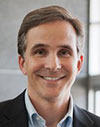
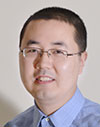
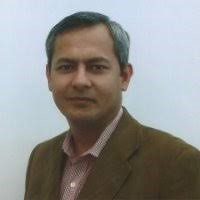
Abstract: 5G networks will incorporate many new technologies including massive MIMO, small cells, beamforming, and millimeter waves. In this Forum, executives from Qualcomm, Huawei, and Ericsson will present and discuss their vision on 5G network technology and its revelation. The executives will then join a panel discussion about 5G expectation, progresses, and realities. In the panel discussion, questions about how all 5G technology work together and what will customers gain from the resulting flood of data will be discussed.
IF02: Executive/CTO Forum 2
Title: 5G Technology Opportunities and Challenges
Presenters:
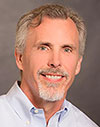
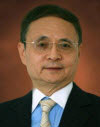
Abstract: 5G is intended to impact every industry, every service provider, and every person on the planet. It promises to extend the global success of 4G-LTE to underpin new use-cases, such as the “industrial Internet” and enhanced mobile broadband. The revolution from 4G to 5G is unprecedented, it stretches the spectrum, device and network technology. This panel will discuss the business and technology opportunities and challenges of 5G Network. The panel will discuss the latest 5G progress in standard and research, learning from trials and remaining gaps and challenges.
Distinguished Industry Speakers Forum
Distinguished Industry Speakers
Presenters:
- Edward G. Tiedemann, Jr., Senior Vice President, Engineering; QUALCOMM Fellow
- Thomas Marzetta, Distinguished Industry Professor at the NYU Tandon School of Engineering, ECE Department
For more than 15 years, the transportation industry has been working towards deploying vehicle-to-vehicle (V2V) and vehicle-to-infrastructure (V2I) communications. This has been called DSRC (Dedicated Short Range Communications) in several regions of the world. The IEEE 802.11p standard was previously chosen for the radio based upon the ease of adapting 802.11a. In the United States, the upper layers are based upon IEEE 1609 and a suite of SAE standards. The emergence of 3GPP Release 14 supporting cellular based vehicle-to-vehicle communications (C-V2V) has infused new energy and is allowing the industry to take a new look at V2X communications. While the outcome is not year clear, cooperation between the automobile industry, cellular industry, and governments is emerging that may lead to deployment of similar, C-V2X based systems, worldwide. This presentation will provide an up-to-date look at C-V2X technology and industry activities in multiple regions of the world that are leading toward C-V2X commercialization. The presentation will conclude with a vision for future C-V2X communications which will incorporate 3GPP Release 16 NR (New Radio) capabilities.
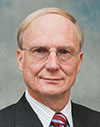
Dr. Edward G. Tiedemann, Jr. is a Qualcomm Fellow and a Senior Vice President of Engineering of Qualcomm Technologies, Inc. He leads Qualcomm’s worldwide standardization and industry organization activities. Dr. Tiedemann was instrumental in the design and development of the TIA/EIA/IS-95 CDMA system, also called cdmaOne™. He led Qualcomm and much of the industry’s efforts in the design and development of the third-generation cdma2000® system. He currently sits on the board of several industry organizations. He is interested in multiple topics in communications including 5G, IoT, and V2x. Prior to becoming involved with terrestrial wireless communications, Dr. Tiedemann was involved with numerous commercial and military satellite systems. From 1977 to 1988, Dr. Tiedemann was at MIT Lincoln Laboratory, where he worked on mmWave satellite communications systems.
Massive MIMO, particularly in the sub-5 GHz spectrum, is poised to deliver revolutionary improvements with respect to area spectral efficiency, uniformly great service, and energy efficiency. Notwithstanding, there is a fundamental question that has to be answered: Will future developments in wireless physical layer technology be limited to incremental improvements upon Massive MIMO, or are genuine breakthroughs still possible?
I will argue that new wireless breakthroughs are unlikely to emerge from purely mathematical theories of wireless communication. Instead, a drastic modification of our overly-simplified wireless signal models, through the introduction of rigorous wave propagation physics, is a possible avenue for a breakthrough. The incorporation of phenomena that are almost universally ignored by communication theorists – mutual coupling of antennas, evanescent waves, and physically realistic spatial correlation – requires the development of an entirely new body of wireless communication theory. Electromagnetic theory can best serve the communication theorist when formulated through linear system theory.
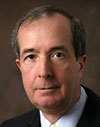
Industry Presentations
IPr01: Cybersecurity Detections and Data Analytics
IPr01A: Cybersecurity detections platform
Presenter: Steve Dispensa, Director of Microsoft’s Cloud + Enterprise Information and Threat Protection group
Abstract: Microsoft has spent years investing in cybersecurity threat detection using machine learning and artificial intelligence techniques. With the advent of Office 365 and, more recently, Microsoft 365, Microsoft has an extremely broad set of signals to power these security analytics. This talk will describe the foundation of Microsoft’s cybersecurity detections platform, the creation of the Microsoft Intelligent Security Graph as the industry’s most advanced detection platform, the recent creation of the Microsoft Graph Security API as a means of direct integration with the ISG, and what’s in store for the future of the platform.
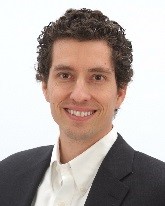 Steve Dispensa is director of Microsoft’s Cloud + Enterprise Information and Threat Protection group, where he leads security products including the Intelligent Security Graph, the advanced threat detections team, Microsoft’s threat intelligence activities, and Microsoft Information Protection. Previously, Steve was co-founder and CTO of PhoneFactor, a Kansas City-based startup in the enterprise authentication space. PhoneFactor was acquired by Microsoft in 2012. Steve holds a Bachelor of Liberal Arts from the University of Missouri – Kansas City and an MBA from the International Institute for Management Development in Lausanne, Switzerland.
Steve Dispensa is director of Microsoft’s Cloud + Enterprise Information and Threat Protection group, where he leads security products including the Intelligent Security Graph, the advanced threat detections team, Microsoft’s threat intelligence activities, and Microsoft Information Protection. Previously, Steve was co-founder and CTO of PhoneFactor, a Kansas City-based startup in the enterprise authentication space. PhoneFactor was acquired by Microsoft in 2012. Steve holds a Bachelor of Liberal Arts from the University of Missouri – Kansas City and an MBA from the International Institute for Management Development in Lausanne, Switzerland.
IPr01B: Data Analytics
Presenter: Al Martin, Vice-president at IBM Analytics Dev & Client Success
Abstract:The ability of machine learning to stream, analyze and learn from data sets without explicit programming can be extremely valuable, allowing data scientists to develop and improve machine learning models on the platform where the data resides. Effective data management should enable data from various sources—including on-premises, cloud and data lakes—to be input into machine learning models. Discover how you can drive more value from your data. Run analytics where the data lives using the tools your data professionals prefer.
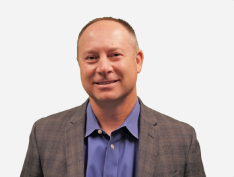 Al Martin is Vice President of Development and Cognitive Care for IBM Analytics. Al brings over 20 years of Support and Development experience leading deeply technical, worldwide teams to influence end-to-end business results. He partners with all levels of leadership, ensuring customers gain competitive advantage with IBM's next generation platforms. Al’s technology and operational expertise includes Analytics, Big Data, Data Movement, Cloud, and Open Platform technologies. While end-to-end solutions are the target objective, product examples include Appliances, Database, Warehousing, Unified Governance, Predictive & Business Intelligence, Enterprise Content Management, Spark, and Hadoop. Connect with Al on Twitter @amartin_v and listen to his popular podcast, Making Data Simple.
Al Martin is Vice President of Development and Cognitive Care for IBM Analytics. Al brings over 20 years of Support and Development experience leading deeply technical, worldwide teams to influence end-to-end business results. He partners with all levels of leadership, ensuring customers gain competitive advantage with IBM's next generation platforms. Al’s technology and operational expertise includes Analytics, Big Data, Data Movement, Cloud, and Open Platform technologies. While end-to-end solutions are the target objective, product examples include Appliances, Database, Warehousing, Unified Governance, Predictive & Business Intelligence, Enterprise Content Management, Spark, and Hadoop. Connect with Al on Twitter @amartin_v and listen to his popular podcast, Making Data Simple.
IPr02: 5G NR
IPr02A: 5G NR Radio Interface for sub 6GHz and mmWave bands
Presenter: Amitabha (Amitava) Ghosh, Nokia Fellow and Head, Radio Interface Group at Nokia Bell Labs.
Abstract: 3GPP NR provides a unified, flexible radio interface capable of supporting various 5G verticals such as automotive, healthcare, industry, smart city, etc. In this talk, we will provide an overview of 5G NR radio interface design and will cover advanced technologies for NR such as scalable OFDM numerology, flexible slot structure, beamformed access, advanced channel coding and mmWave technology and how these features enables these 5G verticals. We will also present the system performance of 5G NR both at sub 6GHz and mmWave bands. Finally, the talk will provide an outlook of new features which will be studied in 3GPP Rel-16 and 17.
 Amitabha (Amitava) Ghosh (amitava.ghosh@nokia.com) is a Nokia Fellow and Head, Radio Interface Group at Nokia Bell Labs. He joined Motorola in 1990 after receiving his Ph.D in Electrical Engineering from Southern Methodist University, Dallas. Since joining Motorola he worked on multiple wireless technologies starting from IS-95, cdma-2000, 1xEV-DV/1XTREME, 1xEV-DO, UMTS, HSPA, 802.16e/WiMAX and 3GPP LTE. He has 60 issued patents, has written multiple book chapters and has authored numerous external and internal technical papers. He is currently working on 3GPP LTE-Advanced and 5G technologies. His research interests are in the area of digital communications, signal processing and wireless communications. He is the recipient of 2016 IEEE Stephen O. Rice and 2017 Neal Shephard prize, member of IEEE Access editorial board and co-author of the book titled “Essentials of LTE and LTE-A”.
Amitabha (Amitava) Ghosh (amitava.ghosh@nokia.com) is a Nokia Fellow and Head, Radio Interface Group at Nokia Bell Labs. He joined Motorola in 1990 after receiving his Ph.D in Electrical Engineering from Southern Methodist University, Dallas. Since joining Motorola he worked on multiple wireless technologies starting from IS-95, cdma-2000, 1xEV-DV/1XTREME, 1xEV-DO, UMTS, HSPA, 802.16e/WiMAX and 3GPP LTE. He has 60 issued patents, has written multiple book chapters and has authored numerous external and internal technical papers. He is currently working on 3GPP LTE-Advanced and 5G technologies. His research interests are in the area of digital communications, signal processing and wireless communications. He is the recipient of 2016 IEEE Stephen O. Rice and 2017 Neal Shephard prize, member of IEEE Access editorial board and co-author of the book titled “Essentials of LTE and LTE-A”.
IPr02B: 5G NR Key Benefit Concepts with focus on the support of Multi-Antenna/MIMO techniques
Presenter: Bo Hagerman, Ph.D., Ericsson
Abstract: 5G will enhance mobile broadband and support a large number of use cases for wireless application beyond the previously deployed cellular generations, including both latency critical and massive machine type communication. These enhancement are enabled by the 5G New Radio (NR) air interface standardized in 3GPP supporting high data rate, high efficiency, wide spectrum range, low latency, high reliability and massive connections. This presentation will address 5G NR’s key design concepts creating the benefits, detail on MIMO and multi-antenna techniques and the NR integrated spatial processing support which is a crucial enabling technology for fulfilling the future communications promises.
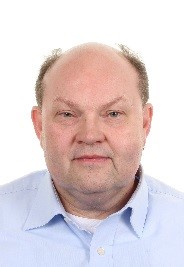 Dr. Bo Hagerman (bo.hagerman@ericsson.com) has more than 30 years of experience in radio network system research and development and is currently a 5G Network Strategy Evolution Leader with Ericsson Inc. He received the M.Sc. EE, Lic. Tech. EE and Ph.D. degrees, in Radio Communication Systems, from Royal Institute of Technology (KTH), Stockholm, Sweden in 1987, 1993 and 1995, respectively. Dr. Hagerman joined Ericsson Research in 1987 and he has held various leading technical positions in research and development working on pre-2G cellular systems and onward with focus on radio network deployment aspects, multi-antenna and spatial processing related questions including HW architectures, algorithms, protocols, deployment and benefits in the radio network. Dr. Hagerman is a Senior Member of IEEE.
Dr. Bo Hagerman (bo.hagerman@ericsson.com) has more than 30 years of experience in radio network system research and development and is currently a 5G Network Strategy Evolution Leader with Ericsson Inc. He received the M.Sc. EE, Lic. Tech. EE and Ph.D. degrees, in Radio Communication Systems, from Royal Institute of Technology (KTH), Stockholm, Sweden in 1987, 1993 and 1995, respectively. Dr. Hagerman joined Ericsson Research in 1987 and he has held various leading technical positions in research and development working on pre-2G cellular systems and onward with focus on radio network deployment aspects, multi-antenna and spatial processing related questions including HW architectures, algorithms, protocols, deployment and benefits in the radio network. Dr. Hagerman is a Senior Member of IEEE.
IPr03: Network Design and Simulation
IPr03A: Options for Reliable Wireless Communications in Aerospace
Presenter: Dominic SCHUPKE
Title: Options for Reliable Wireless Communications in Aerospace
Abstract: After summarizing current trends in aerospace, the presentation elaborates on wireless communications with a focus on networks on board of aircraft, highlighting its benefits in comparison with wired realizations. Several options for reliable wireless transmission are discussed, including Wireless Avionics Intra-Communications (WAIC), Ultra Wide Band (UWB), and the next mobile network generation 5G. Related aspects of air-to-ground communications are considered as well.
 Dominic A. Schupke is with Airbus in Munich, Germany, working in the area of research and innovations in Wireless Communications. Prior to that he was with Nokia/NSN, Siemens, and the Institute of Communication Networks at Munich University of Technology (TUM). He received his Dipl.-Ing. degree from RWTH Aachen in 1998 and his Dr.-Ing. degree from TUM in 2004. He has over 15 years experience in the area of communication networks, especially their design and optimization. Since April 2009 he has taught the course Network Planning at TUM. He is author or co-author of more than 120 journal and conference papers. His research interests include network architectures and protocols, routing, recovery methods, availability analysis, critical infrastructures, security, virtualization, network optimization, and network planning. Dominic is Senior Member of IEEE, and member of Comsoc, VDE/ITG, and VDI.
Dominic A. Schupke is with Airbus in Munich, Germany, working in the area of research and innovations in Wireless Communications. Prior to that he was with Nokia/NSN, Siemens, and the Institute of Communication Networks at Munich University of Technology (TUM). He received his Dipl.-Ing. degree from RWTH Aachen in 1998 and his Dr.-Ing. degree from TUM in 2004. He has over 15 years experience in the area of communication networks, especially their design and optimization. Since April 2009 he has taught the course Network Planning at TUM. He is author or co-author of more than 120 journal and conference papers. His research interests include network architectures and protocols, routing, recovery methods, availability analysis, critical infrastructures, security, virtualization, network optimization, and network planning. Dominic is Senior Member of IEEE, and member of Comsoc, VDE/ITG, and VDI.
IPr03B: Accelerate Network R & D using NetSim
Presenter: Pranav Viswanathan
Pranav Viswanathan is part of the founding team of NetSim and currently handles Sales & Marketing, Product Management, and Support. In the early years of NetSim, he wrote the Discrete Event Simulation (DES) framework for NetSim including the simulation kernel and metrics engine. He continues to be closely involved with NetSim development especially the verification of simulation correctness. He has a penchant for interacting with customers, appreciating their requirements, and answering needs with software. Pranav received his B-Tech from IIT Madras in 2003.
IPr04: Challenges, Update, and Solutions for 5G NR
Presenters: Ben Coffin, National Instruments, SDR Product Manager, Ian C. Wong, Ph.D., Senior Manager, Advanced Wireless Research
Abstract: The race towards 5G has challenged every wireless researcher, hardware manufacturer and operator to evaluate what technology can be leveraged for the next generation of communication technology. The physical layer as we knew it for 4G LTE and previous standards is being pushed to new limits. But the physical layer isn't the only piece of the puzzle anymore. As the standards become increasingly complex and stringent across multiple layers, the need for development in the MAC, Data Link, and Network layers come into play. The deploy-ability and scale of systems is growing. There becomes an increasing need for Remote Radio Head applications, where base stations may evolve beyond a single antenna system to remote nodes across a city. The demand for wireless communication has placed multiple advanced challenges on the industry at once. In this presentation, we would like to provide the 3GPP standard update, some of the 5G applications, and provide an overview of the NI software defined radio platform to rapidly prototype wireless communications systems to tackle those challenges.
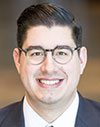 Ben Coffin is a Product Manager for the Software Defined Radio team at National Instruments. Ben manages the NI USRP product portfolio as well as the MIMO Prototyping System hardware and software. Previously at NI, Ben has spent time as an RF Systems Engineer developing characterization test applications for 802.11ax and other wireless standards. Ben holds a B.S. in Wireless Engineering from Auburn University..
Ben Coffin is a Product Manager for the Software Defined Radio team at National Instruments. Ben manages the NI USRP product portfolio as well as the MIMO Prototyping System hardware and software. Previously at NI, Ben has spent time as an RF Systems Engineer developing characterization test applications for 802.11ax and other wireless standards. Ben holds a B.S. in Wireless Engineering from Auburn University..
 Dr. Ian C. Wong is Senior Manager of the Advanced Wireless Research group at National Instruments where he leads the company’s 3GPP and 802.11 wireless standards strategy and platforms for wireless system design, simulation, prototyping, and implementation. From 2007-2009, he was a systems research and standards engineer with Freescale Semiconductor where he represented Freescale in the 3GPP LTE standardization efforts. He was the Industry Program Chair for IEEE Globecom 2015 in Austin, the Director for Industry Communities for IEEE Communications Society 2016-2017, and a senior member of the IEEE. His current research interests include 5G wireless systems design and prototyping, and design automation tools for rapid algorithm development.
Dr. Ian C. Wong is Senior Manager of the Advanced Wireless Research group at National Instruments where he leads the company’s 3GPP and 802.11 wireless standards strategy and platforms for wireless system design, simulation, prototyping, and implementation. From 2007-2009, he was a systems research and standards engineer with Freescale Semiconductor where he represented Freescale in the 3GPP LTE standardization efforts. He was the Industry Program Chair for IEEE Globecom 2015 in Austin, the Director for Industry Communities for IEEE Communications Society 2016-2017, and a senior member of the IEEE. His current research interests include 5G wireless systems design and prototyping, and design automation tools for rapid algorithm development.
Industry Seminars
IS01: Radio Communications in a Hostile Environment
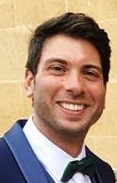 Stefano Agosta is working at the Information Technology Department of CERN, the European Organization for Nuclear Research. He received a B.S. and M.S. degree in Telecommunications Engineering at Politecnico di Torino and a M.S. degree in Electrical and Computer Engineering at The Georgia Institute of Technology. Since 2012 he is responsible for CERN indoor mobile services.
Stefano Agosta is working at the Information Technology Department of CERN, the European Organization for Nuclear Research. He received a B.S. and M.S. degree in Telecommunications Engineering at Politecnico di Torino and a M.S. degree in Electrical and Computer Engineering at The Georgia Institute of Technology. Since 2012 he is responsible for CERN indoor mobile services.
IS02: 5G Development with MATLAB
-
5G NR PDSCH Transport Channel
-
5G NR Polar Coding
-
TR 38.901 Propagation Channels
-
Physical Channels and Signals Generation
-
OFDM Waveforms with NR Subcarrier Spacing
 Dr. Houman Zarrinkoub is a senior wireless product manager at MathWorks, based in Massachusetts, USA. During his 17 years service at MathWorks he has served as a development manager responsible for multiple signal processing and communications software tools. Prior to MathWorks, he was a research scientist at Nortel Networks, where he contributed to multiple standardization projects for mobile and voice coding technologies. He has been awarded multiple patents on computer simulations of signal processing applications. Houman is the author of the book Understanding LTE with MATLAB: From Mathematical Modeling to Simulation and Prototyping (Wiley, 2014). He holds a B.Sc. degree in electrical engineering from McGill University and M.Sc. and Ph.D. degrees in telecommunications from the Institut National de la Recherche Scientifique, in Canada.
Dr. Houman Zarrinkoub is a senior wireless product manager at MathWorks, based in Massachusetts, USA. During his 17 years service at MathWorks he has served as a development manager responsible for multiple signal processing and communications software tools. Prior to MathWorks, he was a research scientist at Nortel Networks, where he contributed to multiple standardization projects for mobile and voice coding technologies. He has been awarded multiple patents on computer simulations of signal processing applications. Houman is the author of the book Understanding LTE with MATLAB: From Mathematical Modeling to Simulation and Prototyping (Wiley, 2014). He holds a B.Sc. degree in electrical engineering from McGill University and M.Sc. and Ph.D. degrees in telecommunications from the Institut National de la Recherche Scientifique, in Canada.
This podium presentation is now incorporated into industry presentation IPr04
Industry Podium Presentation
Monday, May 21, 2018, 15:45 - 16:05
IPP01: Ideal Hardware and Software for MAC/PHY Layer Prototyping
Presenter: Ben Coffin, Product Marketing – SDR, National Instruments
Abstract: National Instruments have been continuously investing on our flexible SDR platform that allow users to rapidly prototype wireless communications system with over-the-air signals. In order to prototype MAC layer with the over-the-air signals in the real-world scenario, the real-time determinism is critical to meet the timing requirements, yet there are not a lot of real-time solutions in the market. NI SDR platform provides flexibility on a reliable software defined radio hardware as well as software. The open and modifiable MAC and PHY layer IP gives a jump start to your research so that you are ways ahead to get your application running. Come and learn about the new product releases to better address the needs to serve the MAC and PHY layer researchers.
 Ben Coffin is a Product Manager for the Software Defined Radio team at National Instruments. Ben manages the NI USRP product portfolio as well as the MIMO Prototyping System hardware and software. Previously at NI, Ben has spent time as an RF Systems Engineer developing characterization test applications for 802.11ax and other wireless standards. Ben holds a B.S. in Wireless Engineering from Auburn University.
Ben Coffin is a Product Manager for the Software Defined Radio team at National Instruments. Ben manages the NI USRP product portfolio as well as the MIMO Prototyping System hardware and software. Previously at NI, Ben has spent time as an RF Systems Engineer developing characterization test applications for 802.11ax and other wireless standards. Ben holds a B.S. in Wireless Engineering from Auburn University.














